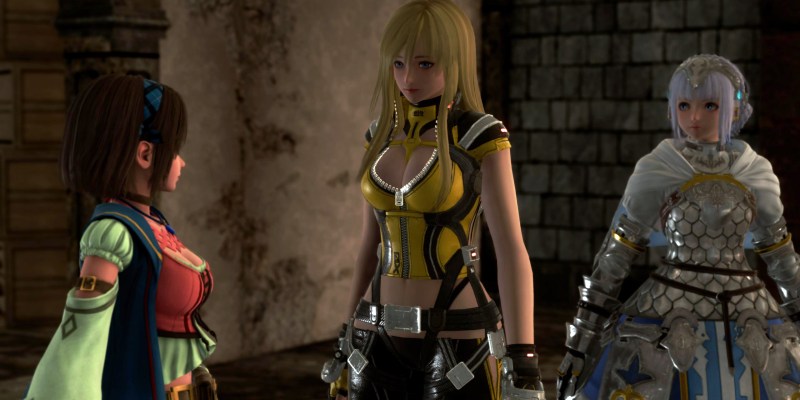The Star Ocean franchise has fallen on rough times, or so I hear. For as much as I love JRPGs, I had never actually played any of them till now. However, having finished Star Ocean: The Divine Force for review on PlayStation 5, it definitely feels like developer tri-Ace is headed back in the right direction. It’s a quirky game that feels like it was made on more of a budget than your typical mainstream JRPG, and some of its design decisions are confusing at best. But overall, it’s a fun and memorable experience that doesn’t outstay its welcome.
Fantasy Meets Sci-Fi, Again
Although The Divine Force tells one singular story, the game lets you select between two protagonists at the outset: Raymond Lawrence, the captain of a sci-fi merchant ship, or Princess Laeticia, a stereotypically kind and dutiful royal in a fantasy world. These characters meet almost immediately at the beginning of the game, but you experience the story from the perspective of whomever you pick, resulting in some slightly different story scenes and even different dungeons and bosses on rare occasion. It’s a decent way to create replay value for what is otherwise a 30-35-hour game for non-completionists.
When Raymond gets shot down and uses an escape pod to arrive on Laeticia’s world, they team up to find Raymond’s surviving comrades and also to help Laeticia gather allies for a cold war that might get hot. The first third of the story is almost entirely generic fantasy RPG fare like saving people from a mine overrun with monsters, though there is also an ongoing plot thread about a deadly disease spreading that necessitates face masks and vaccine research, which is certainly striking.
The truth is that Star Ocean: The Divine Force doesn’t really become engaging with its story until around the halfway point, as the sci-fi elements gradually start making their way back in. In fact, you don’t even find out what the game is really about until the last quarter of the story, though the narrative at least does a decent job of foreshadowing where things are going. All in all, it’s not a story that you’ll be celebrating for the rest of your life, but it ends in a satisfying way and all of the main characters are likable and have personality.
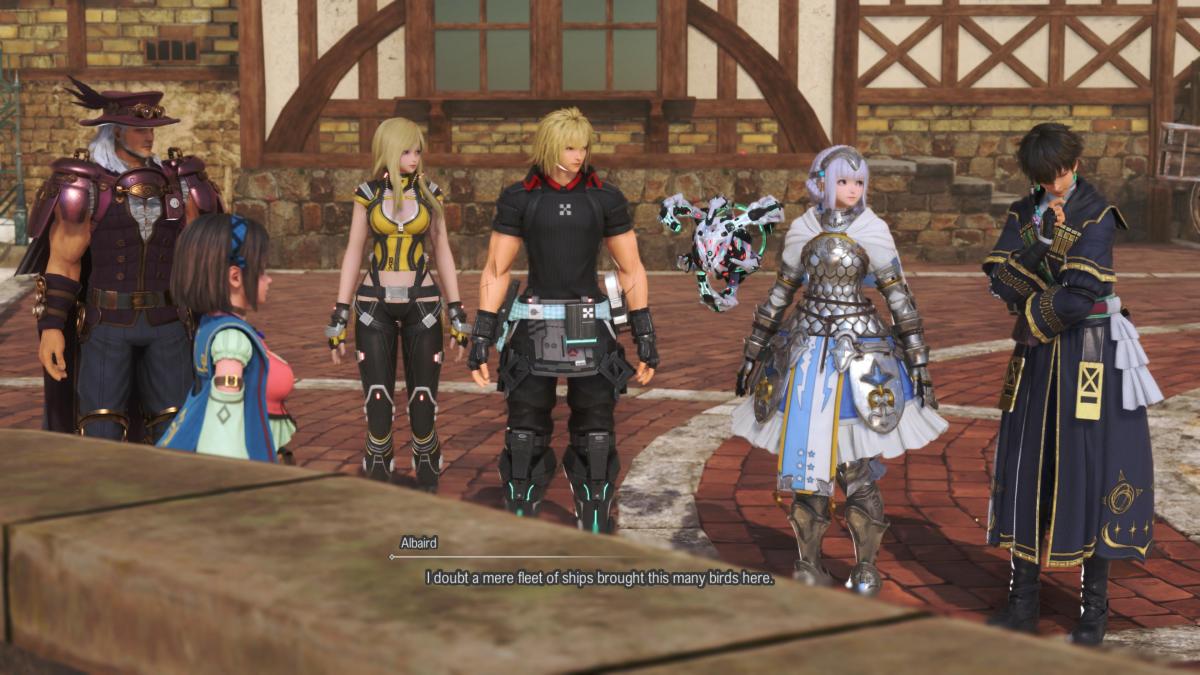
The visual designs for the characters who actually matter are almost all quite good, often feeling archetypal but in a stylish way. Most of the women have comically enormous busts even when it makes no sense, but I’ll leave it up to individuals to decide how they feel about the sexy blonde android whose pants barely cover her crotch. Although, some of the characters’ faces just look a bit off, in a way that’s difficult to describe. It seems to be a stylistic choice, but it’s an odd one all the same. Facial animations are also a bit stilted, sometimes putting them at odds with the excellent voice acting.
Likewise, all of the science fiction environments in Star Ocean: The Divine Force look terrific, with enticing futuristic architecture, but the fantasy environments are more mixed. Some of the town architecture feels uninspired or outright impractical, and on PS5, the graphics themselves are still mostly nothing a PlayStation 4 couldn’t handle. On PS5, you can tell the game to prioritize visuals or performance, and if you choose visuals, you’re going to notice frame rate hiccups. I honestly don’t care about frame rate though, so it didn’t bother me.
In any case, the soundtrack from Motoi Sakuraba is awesome, and it really helps to keep things going in the otherwise generic opening hours of the story.
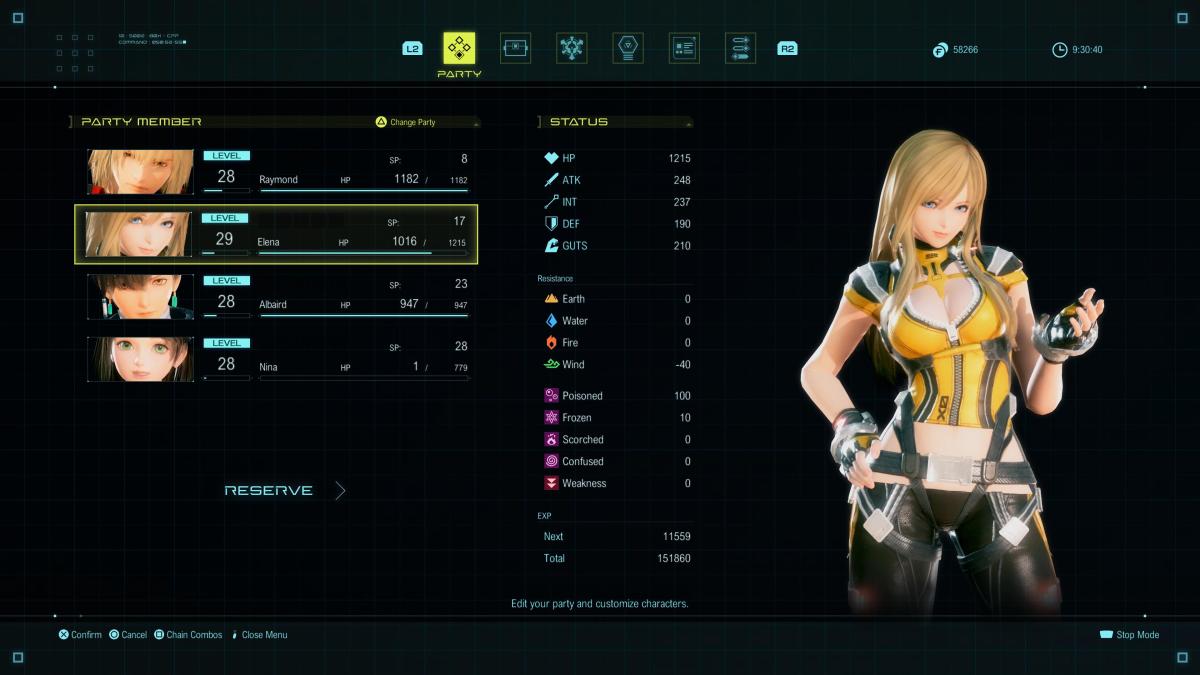
Star Ocean: The Divine Force Is All About Small-Scale Adventure Done Right
The most unique feature of Star Ocean: The Divine Force is D.U.M.A., a small robot that gives you the ability to boost into the air for a few seconds to reach locations that would otherwise be inaccessible, like rooftops and high ledges. It’s a simple mechanic, yet rocketing around town or the wilderness never gets old and is dramatically more fun than walking. You can take advantage of boosting to obtain hidden treasure or energy that lets you improve D.U.M.A.’s travel, combat, and defensive capabilities, and these items are always spaced out in thoughtful ways that reward your observation.
The best part of all though is how The Divine Force values your time. The entire game is divided into discrete, self-contained areas that are large enough to take advantage of boosting but also small enough not to feel bloated and empty. The largest open areas in the game can be thoroughly scanned for treasure within half an hour, feeling like the welcome antithesis of an open-world game. It’s really satisfying to find a new area, have fun boosting around exploring for a bit, and then just move on to the next area.
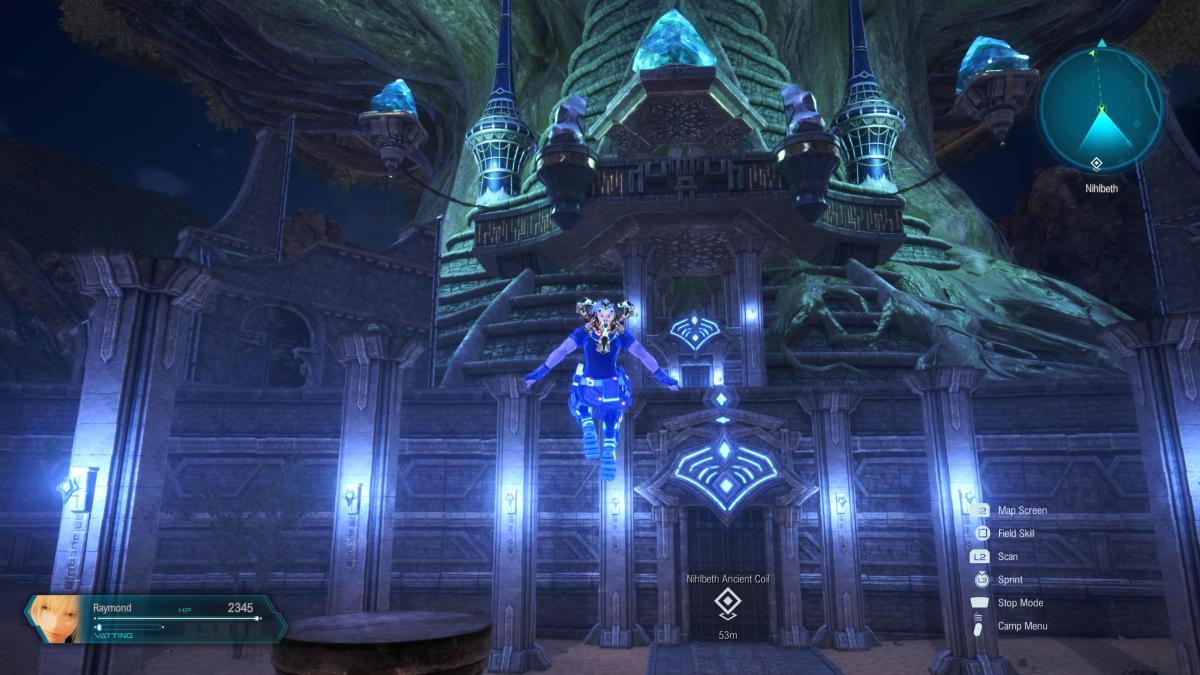
Lacking Incentive to Explore Combat and Game Mechanics
One of the most unfortunate aspects of Star Ocean: The Divine Force is how, on the default difficulty, there are a lot of game mechanics you can outright ignore and still complete the game with no problems. For instance, there is a robust unlockable crafting system with many different options, and you can level up characters’ unique skills to unlock additional perks during crafting. However, the gear and items I could buy from shops were already good enough, so I didn’t have a reason to craft anything. I’m sure there are hidden superbosses that demand thoughtful crafting, but that’s not something that will concern a casual player.
A lack of incentives extends to the battle system itself as well, though it’s otherwise solid. There are eight playable characters, and your party consists of four characters attacking in real time. Each character has a distinct combat style with mostly unique abilities, and tri-Ace did a good job balancing them all and making them fun to use. Your party is constantly leveling up too, so you really feel a sense of progress. And as you unlock and level up more abilities, you can equip them to specific combos tied to your controller’s face buttons. Abilities have different AP costs, and your maximum AP fluctuates depending on how well you fight at a given moment. It is enjoyable to strategically customize combos in the menu and to account for different combat situations. But the problem is you don’t need to.
I won most of the game by using the same basic combo Raymond was equipped with when the game started, just because it did fast and high damage already. Of course, I could have raised the game difficulty and seen if that affected things, but I didn’t want to because of another issue — the AI of my party members. Party AI is competent enough to get through a regular battle without issue, but party members are awful at dodging attacks during boss fights and typically end up dead. I spent some boss fights mostly playing as the healer character simply because it was the only efficient way to keep everyone alive, and during the endgame I just chugged cheap healing items constantly.
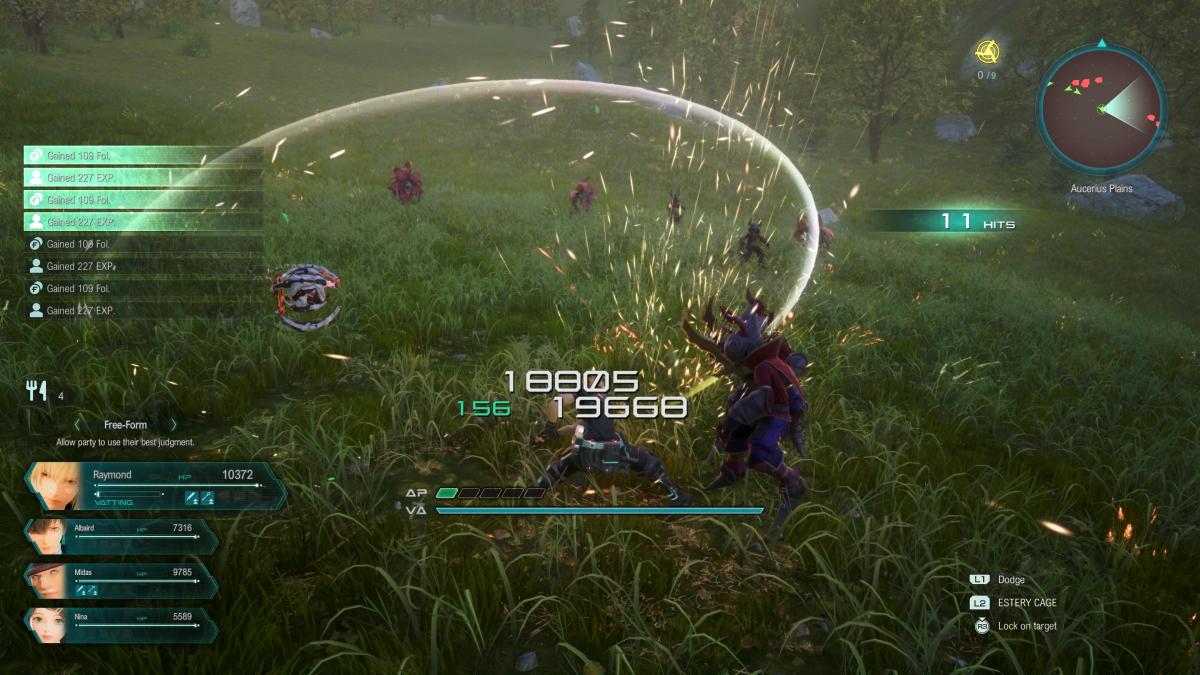
It’s a shame because some of the boss fights are otherwise quite fun (except for a stupid bird that was frustratingly difficult to hit). It would have been more fun though if healing items were more limited and the character AI were simply much better. It’s bizarre to say, but frankly, I wish this game were more like Stranger of Paradise in that regard.
Quirky design choices permeate Star Ocean: The Divine Force in general. For example, NPCs in this game exist almost exclusively for one of two reasons: to offer highly mundane fetch quests or “kill X number of monsters” quests, or to challenge you to a strategic board game that makes a horrendously boring first impression and will scare off many from ever learning its full nuance. Another weird thing is that party members regularly come and go from the party (which I don’t mind at all, actually), and the game constantly unequips their accessories upon leaving on the off chance that you wanted to put them on someone else. The result was that I didn’t bother equipping accessories at all half the time because I knew they were going to be removed again soon.
The production values are also hit and miss. The game cuts some corners, most likely due to budget rather than technical constraints. A scene that should have had a whole army had maybe a dozen soldiers instead, and often, bosses that “transform” for a battle won’t be shown transforming. They’re just suddenly in a new form. I actually found these concessions charming, but mileage will vary. In any case, the whole final section of the game looks terrific visually.
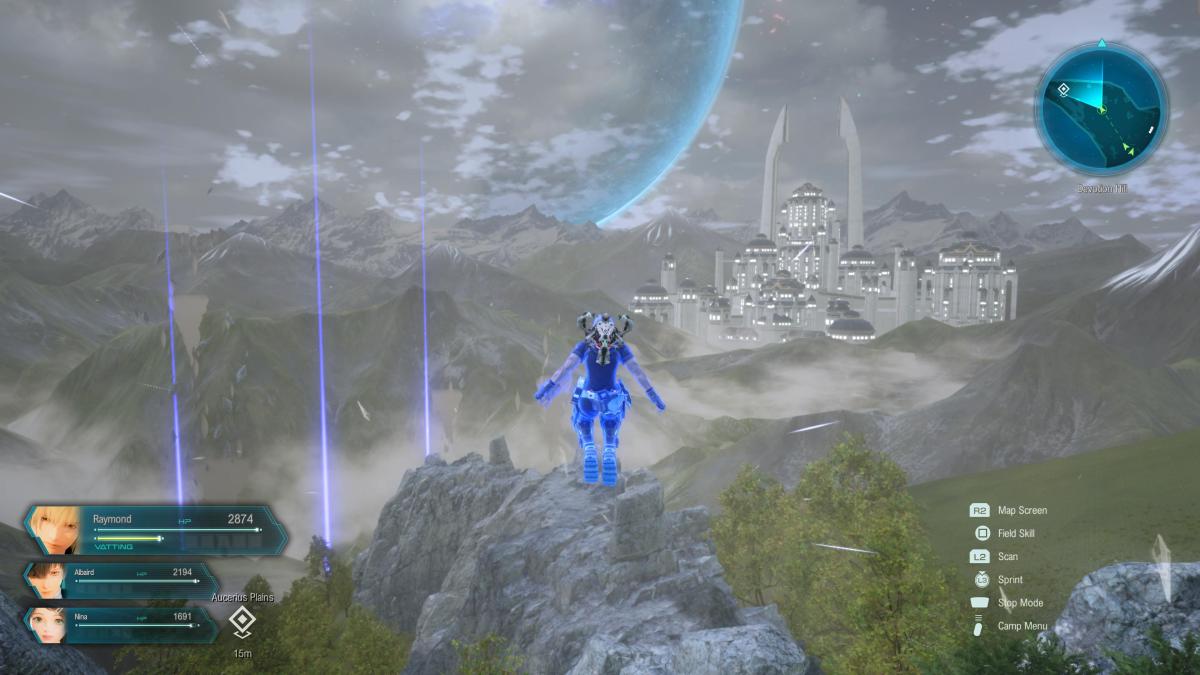
The Review Verdict on Star Ocean: The Divine Force
The more I played Star Ocean: The Divine Force, the more I enjoyed it. The characters are likable, the combat system is sound, the music is great, and boosting around the map with D.U.M.A. is weirdly delightful. The story really makes you wait for the good stuff to happen though, and several of the game’s most central mechanics actually aren’t that important to completing the game under default conditions. Weak party AI and a handful of strange little decisions put a slight damper on things as well. Nevertheless, Star Ocean: The Divine Force is a commendable effort from tri-Ace, and it’s definitely a worthwhile way to spend a brisk 30 hours.
A PlayStation 5 review code for Star Ocean: The Divine Force was provided by the publisher.
